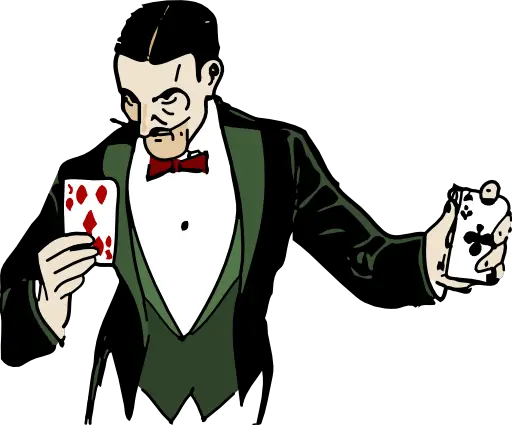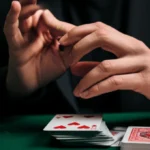Support our educational content for free when you purchase through links on our site. Learn more
Unmasking the Mind Reader: 10 Secrets of Mentalism for Beginners [2024] 🤯
Ever wondered how mentalists seem to know your deepest thoughts? It’s not telepathy or mind control – it’s a fascinating blend of skills and techniques that anyone can learn! We’ve been behind the scenes at Mind Trick™, and we’re ready to reveal the secrets of mentalism, demystifying the art of mind reading and showing you how to create your own mind-bending illusions. Imagine mastering the art of suggestion, reading subtle body language cues, and even pulling off tricks like the classic “Billet Reading” – you’ll be the life of the party! But be warned: Once you learn these tricks, you’ll never look at a mentalist performance the same way again!
Quick Answer
Here’s a glimpse into the world of mentalism:
- Mentalists don’t actually read your mind. They create the illusion of mind reading using a combination of psychological techniques, observation, and clever misdirection.
- Mastering the art of observation is key. Pay attention to body language, facial expressions, and even the way someone speaks to gain insights into their personality and thoughts.
- Suggestion and cold reading are powerful tools. Learn to use open-ended questions and make general statements that resonate with your audience, creating the impression of understanding their inner world.
- Practice makes perfect. The more you practice your skills, the more natural and convincing your mentalist performances will become.
👉 Shop now for mentalism supplies on Amazon: Mind Reading Tricks on Amazon | Mentalism Supplies on Amazon
Table of Contents
- Quick Tips and Facts
- The History of Mentalism and Mind Reading
- Understanding the Techniques of Mentalists
- Explore Common Mentalist Tricks and Their Explanations
- Learning Mind Reading Techniques for Beginners
- The World of Professional Mentalists
- Conclusion
- Recommended Links
- FAQ
- Reference Links
Quick Tips and Facts
The Secret Behind Mentalist Mind Reading
Forget about X-ray vision or brain waves. Mentalists don’t actually read your mind. Instead, they use a captivating blend of psychology, observation, and showmanship to create the illusion of mind reading. 🤯 They’re masters of misdirection, subtly guiding your thoughts and responses to create a convincing performance.
Think of it as a magic show for your mind! 🎩
Is Mind Reading Real?
The answer is no, real mind reading as portrayed in movies and TV shows doesn’t exist – at least not scientifically proven. While some claim to have psychic abilities, there’s currently no robust evidence to support these claims. The American Psychological Association (APA) states that “there is no scientifically valid evidence to support the existence of extrasensory perception (ESP).” [Link: https://www.apa.org/topics/extrasensory-perception]
The Power of Suggestion and Observation
Mentalists use powerful techniques like suggestion, cold reading, and observation to create the impression of mind reading. They’re constantly absorbing information, both verbal and non-verbal, from you to understand your personality and interests. 🕵️♀️
Think about it: How many times have you noticed someone say something, and then you start thinking about it? That’s the power of suggestion at work!
For beginners aspiring to learn these techniques, here are some quick tips:
- Master the art of active listening.
- Pay close attention to non-verbal cues like body language and facial expressions.
- Learn how to ask open-ended questions.
- Practice observing people in different situations.
The History of Mentalism and Mind Reading
Early Mentalists and Showmen
The roots of mentalism can be traced back to ancient times, with magicians and performers using techniques to create illusions of mind control and supernatural powers. The history of mentalism is closely tied to the rise of spiritualism in the 19th century, where “mediums” claimed to communicate with spirits. 👻
During this era, figures like Harry Houdini, John Henry Anderson (known as the “Great Wizard”), and Jean Eugène Robert-Houdin popularized the use of mentalist tricks in their stage performances, captivating audiences with their feats of apparent mind reading and mental control. Houdini, despite his focus on escape artistry and physical illusions, cleverly used mentalism to amplify the suspense and mystery of his performances.
The Golden Age of Mentalism
The early 20th century saw the emergence of modern mentalism with the rise of figures like Harry Kellar and Charles Carter. These performers refined the techniques of cold reading and subtle psychology, pushing the boundaries of what was considered possible within the realm of mentalist illusions.
Kellar became known for his masterful use of the “Billet Trick” – where audience members write down words or phrases, which are seemingly read by the mentalist through apparent mental power. He blended deception and psychology with meticulous stage presence to create unforgettable performances.
Carter, known for his natural stage presence and unassuming demeanor, focused on psychological effects and created a more intimate style of mentalism. He popularized the use of mentalism as a parlor trick, bringing these concepts into closer relationships with audiences and everyday settings.
Understanding the Techniques of Mentalists
Mentalists employ a variety of techniques to create the impression of mind reading. While these methods may seem supernatural, they are, in fact, based on meticulous planning and the strategic use of psychology.
Cold Reading: The Art of Generalizations
Cold reading is a powerful technique that mentalists use to create the illusion of knowing someone’s personal thoughts and feelings. It involves making broad and general statements that are likely to apply to many people.
Mentalists can create the impression of knowing someone by making statements that are deliberately vague and open to interpretation. For example, a mentalist might say:
“I sense that you have a very strong personality and are a leader type.”
The real trick is to observe the person’s reaction. If they show any sign of agreement or confirmation, the mentalist can then build upon that statement and make more specific comments, further solidifying the illusion of mind reading.
The Importance of Observation
While cold reading relies on general statements, it’s not a random guessing game. Mentalists are keenly aware of subtle non-verbal cues like:
- Body Language: The way a person sits, stands, or moves their hands.
- Facial Expressions: A slight smile, a furrowed brow, or a raised eyebrow.
- Voice Tone and Pattern: Rapid speech, pauses, or a change in tone.
By focusing on these cues, mentalists can refine their general statements to appear more tailored to the specific individual.
Forcing and The Power of Choice
Forcing is a technique used by magicians and mentalists, where they subtly influence a participant’s choice to ensure a predetermined outcome. Imagine it’s like a mental magic trick, where you think you’re making the choice, but in reality, the outcome was pre-planned all along!
Imagine you’re offered a choice between two red balls. However, the mentalist has skillfully positioned the balls so that one is conveniently closer to you, making it more likely you’ll naturally choose that specific one. They may also create a subtle bias by using suggestive language like, “The red ball on your right feels like the one for you.” 🤔
By mastering forcing techniques, mentalists can guide the participant’s choices without revealing their intentions. It’s a subtle yet powerful form of misdirection.
Subtle Cues and Body Language Reading
Ever noticed that just by looking at someone, you can get a sense of how they’re feeling? Mentalists are masters of this art, reading subtle cues and interpreting body language to gather insights into a person’s thoughts and emotions.
For example, a furrowed brow, a clenched jaw, or a tense stance can reveal a person’s feelings of anxiety, while a relaxed posture, a genuine smile, and open gestures indicate a more confident and comfortable state.
Mentalists use this information to create a personalized connection with their audience and tailor their performance to generate the impression that they’re intuitively understanding the person’s inner world.
These interpretations are based on common behavioral patterns, but remember, body language can be deceiving, and it’s important to consider other factors before drawing conclusions.
The Use of Sleight of Hand and Misdirection
Sleight of hand is a crucial skill for mentalists, allowing them to perform ** seemingly impossible feats** that appear to defy logical explanation.
Imagine a scenario where a mentalist is performing a card trick, and they reveal a specific card that was previously selected by a participant. This act can be achieved through the skillful use of quick hand movements and strategic positioning of cards. The mentalist might seemingly “force” a particular card, or utilize techniques to swap cards without the audience’s notice.
Misdirection plays a vital role in these tricks, keeping the audience focused on the mental aspect of the performance while the sleight of hand takes place behind the scenes. By diverting attention and creating distractions, the mentalist manipulates the audience’s perception, making them believe the impossible has occurred.
Let’s talk about a classic misdirection technique: The mentalist may direct the audience’s attention towards a seemingly insignificant object while simultaneously executing the sleight of hand with their other hand. This ensures the audience is focused on the wrong thing, creating the illusion of an impossible act.
Sleight of hand and misdirection are the foundation of many mentalist tricks, creating a blend of visual deception, psychological manipulation, and stage presence.
Conclusion
The world of mentalism is a fascinating blend of psychology, showmanship, and deception. While true mind reading might remain a figment of our imagination, the skilled techniques and illusions employed by mentalists continue to captivate and amaze audiences.
By understanding the psychology behind these techniques, we can appreciate the artistry and ingenuity behind mentalist performances. Next time you’re watching a mentalist, try to observe the subtle cues they use, how they interact with the audience, and the clever misdirection they employ.
You may be surprised at how much you can learn about the art of persuasion, influence, and the human mind!
Recommended Links
Explore these recommended books to dive deeper into the world of mentalism:
- The Mentalist’s Handbook: The Complete Guide to Performing Mentalism Amazon
- Practical Mentalism: A Beginner’s Guide to the Mysteries and Magic of Mind Reading Amazon
- The Art of Deception: The Psychology of Magic Amazon
Check out these brands that offer a range of mentalist tricks and tools:
- Theory11: Theory11 Official Website
- Ellusionist: Ellusionist Official Website
- Murphys Magic Supplies: Murphys Magic Supplies Official Website
FAQ
How do mentalists do the envelope trick?
Mentalists employ a variety of techniques to perform the envelope trick, often using a combination of sleight of hand, misdirection, and pre-arranged methods.
The “One-Ahead” Method
One common technique is the “one-ahead” method, involving a secret first statement. This statement is often memorized beforehand, acquired through a “plant” in the audience, or obtained through a subtle sleight-of-hand maneuver.
The mentalist then strategically manipulates the order of the envelopes, subtly placing the memorized statement at the top of the pile, and then reveals it as the first “read” thought. The real first thought is then revealed as the mentalist proceeds through the rest of the stack, maintaining this one-step advantage throughout the trick.
Read more about “10 Mind-Bending Card Tricks That Will Leave You Speechless! … 🎩✨”
How do mentalists know what you’re thinking?
The truth is, they don’t. Mentalists use a combination of subtle psychological techniques and masterful observation to create the illusion they’re reading your mind.
Combining Psychological Techniques:
- Cold Reading: They make general statements that apply to many people, carefully observing reactions and adapting their statements based on the audience’s responses.
- Forcing: They use misdirection and subtle prompts to influence the participant’s choices, ensuring a predetermined outcome.
- Suggestion: They plant suggestions, subtly influencing the participant’s thoughts and behaviors without their awareness.
- Body Language Reading: They interpret subtle cues like facial expressions, body posture, and hand gestures to create a sense of understanding and intuition.
Read more about “Guess a Number Between 1 and 10: The Ultimate Number Magic Trick … 💫”
How do beginners learn to read minds?
Beginners interested in learning mentalist techniques should focus on mastering the fundamentals of observation, communication, and psychology:
Essential Skills:
- Active Listening: Develop the ability to pay close attention to what a person is saying and how they’re saying it.
- Non-Verbal Communication: Learn to interpret body language and facial expressions, recognizing the subtle cues that reveal a person’s emotions and thoughts.
- Observation Skills: Cultivate the ability to notice details, patterns, and inconsistencies.
- Psychological Insights: Educate yourself about basic psychology, understanding the key principles that govern human behaviour.
- Practice: Regularly practice your observation skills and mentalism techniques in real-life settings, refining your abilities and making them more natural.
What is the trick to mind reading?
While mentalism techniques might appear magical or supernatural, they’re based on a combination of skillful deception, strategic communication, and psychological manipulation.
Key Elements:
- Sleight of Hand: Mastering sleight-of-hand techniques allows mentalists to subtly manipulate objects and create visual illusions.
- Misdirection: Diverting the audience’s attention to create distractions and misdirect their focus away from the true method.
- Imagination and Stage Presence: Mentalists create powerful performances by tapping into their imaginations, building suspense, and engaging in captivating storytelling.
Read more about “The Mind-Reading Magic Trick Revealed: Unmask the Secrets … 🤯”






